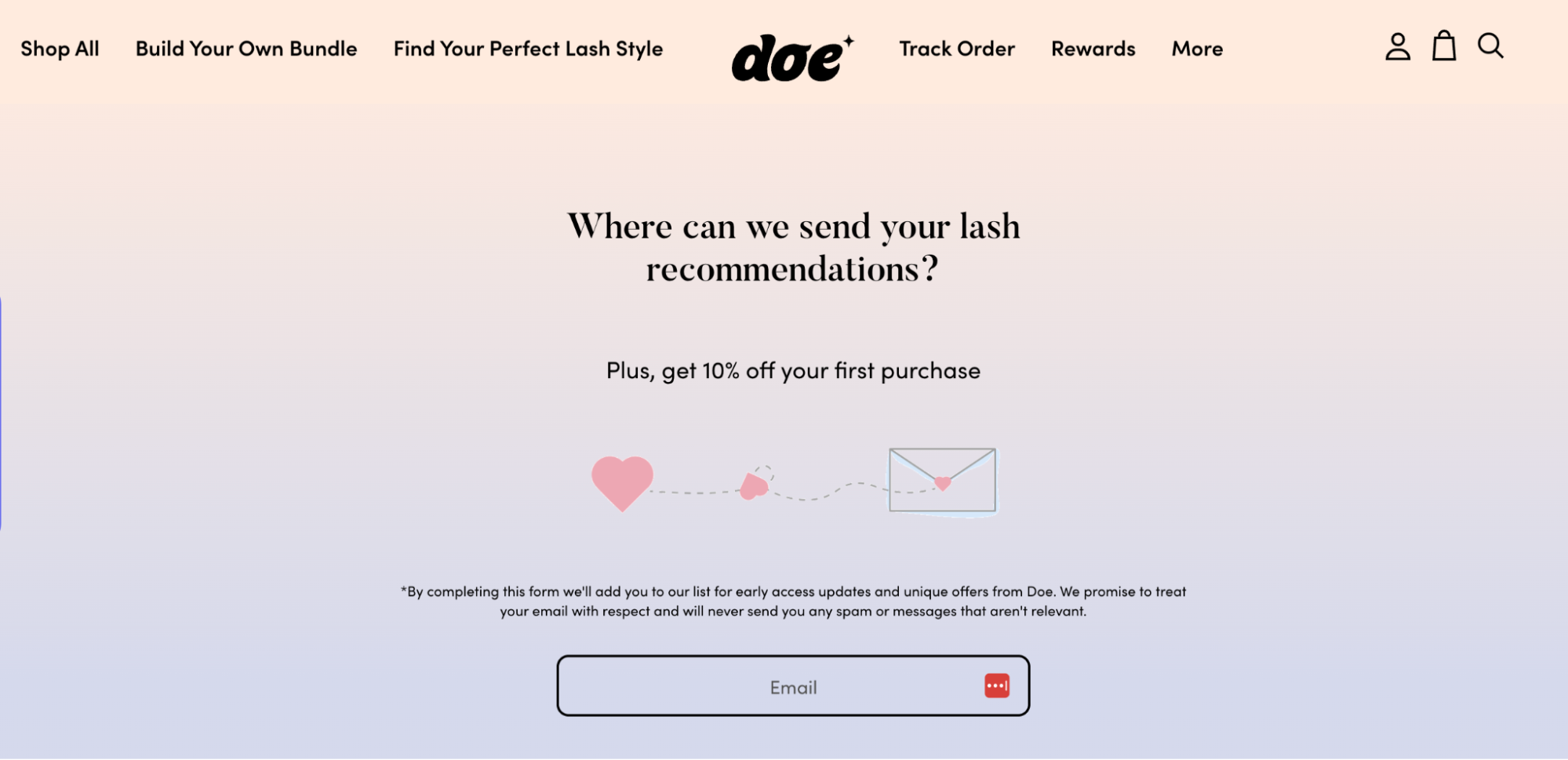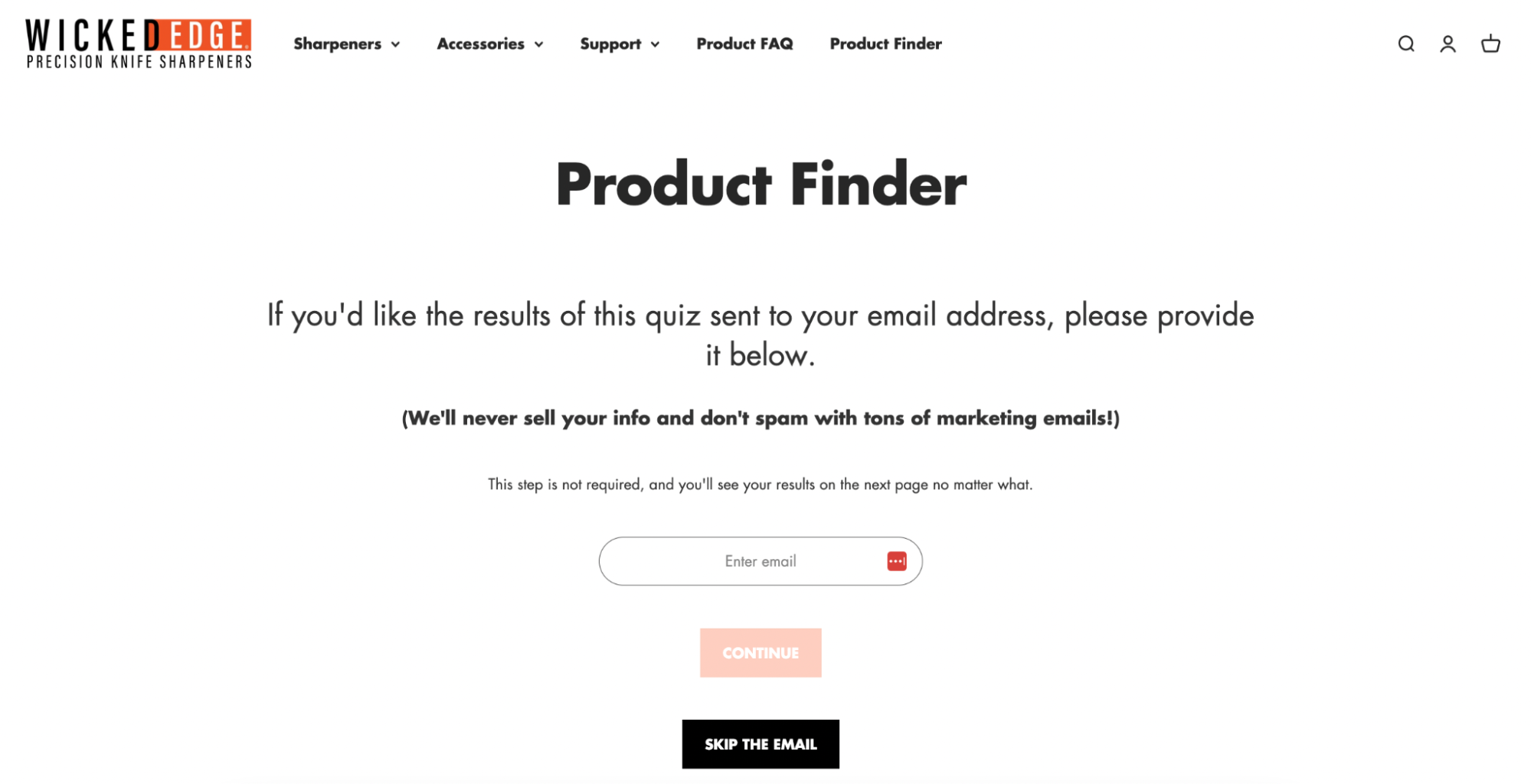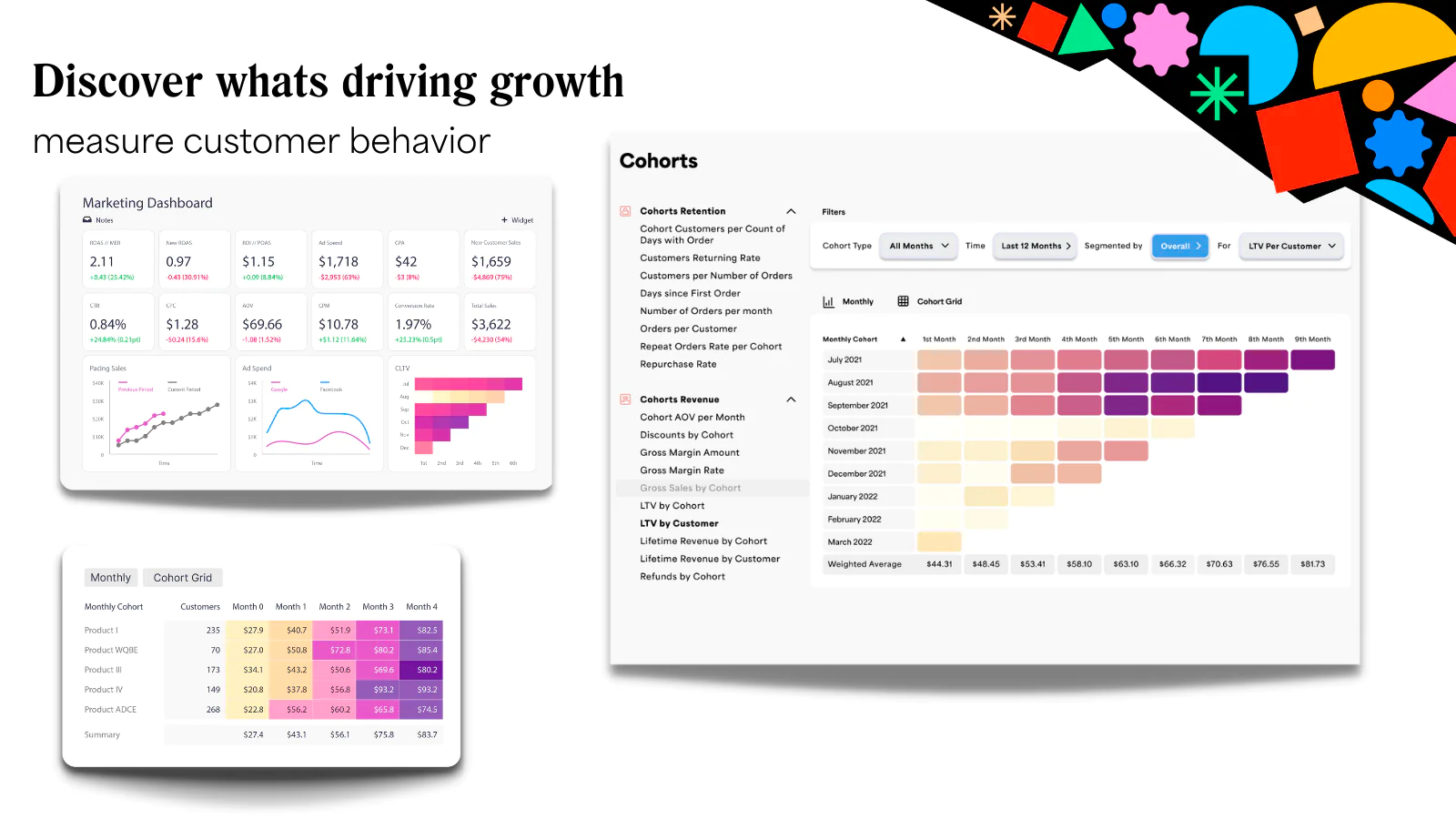Over the past few years, we’ve seen growing concerns about consumer privacy and protection online.
In early 2021, those concerns came to a head when Apple added another layer of protection in their iOS 14.5 update in the form of the App Tracking Transparency feature. For the first time, apps needed users’ permission before tracking their data across apps or websites owned by other companies—the same data that’s used to personalize advertising.
Since then, privacy-related updates have continued with each iOS update, making consumers more aware of their data. Now, the majority of Americans are concerned about how their personal data is being used. Studies show 41% of marketers are reimagining their approach to digital data.
If you spend money on digital ads, rely on email marketing, or have a mobile app for your business on the Apple App Store, here’s what you need to know about iOS’s impact on ecommerce marketing. Plus, we’ll outline the steps you can take to build a resilient marketing strategy for future iOS updates.
What are Apple’s iOS updates?
Apple iOS updates are new releases of the operating system that power Apple devices, including iPhones and MacBooks. Alongside new display features like widgets, Apple’s iOS updates often have elements related to privacy.
The most recent and notable iOS updates include:
iOS 14: Released in 2020, this was the biggest shake-up to Apple’s privacy features. The 14.5 update included App Tracking Transparency, which required app developers to have explicit permission from users before tracking in-app data.
iOS 15: This 2021 Apple iOS update came with more privacy features, particularly for Apple’s Mail app. This includes Mail Privacy Protection, which hides the IP address of a sender, and Hide My Email, which allows users to send anonymous messages.
iOS 16: Released in 2022, this update continued to put Apple users in the driver’s seat of their own privacy settings. Users can swipe down from the Control Center to see which apps are using their location, according to Justin Sagurton, who works in privacy engineering for Apple.
iOS 17: Released in September 2023, iOS 17 gives users improved sharing permissions so they have more control over what they share with apps. Additional link tracking protection removes extra information from links shared in Messages, Mail, and Safari Private Browsing that some websites use in their URLs to track users across other websites.
What areas of ecommerce does Apple’s iOS update impact?
While these changes attempt to meet online shoppers’ demand for increased consumer privacy, it also means ecommerce merchants need to adjust their marketing strategies to attract and retain customers.
The iOS impact on social media
iOS impacts how Apple users interact with their mobile devices. This has a domino effect on social media platforms, as BeReal, Facebook, and WhatsApp are among the most downloaded Apple apps. Unless Apple users opt into tracking, marketers’ ability to monitor users interacting with them is impaired.
Shopify’s Facebook sales channel lets you connect and manage your sales and marketing activities on Facebook properties. Once you have all required customer consent, you can optimize ad spend for different segments, including Android, web, and iOS traffic.
The iOS impact on digital ads
When Apple introduced their App Tracking Transparency feature in 2021, studies estimated that advertisers lost 30% accuracy on targeting Facebook algorithms.
Most recent updates haven’t had as much impact, which varies for each merchant based on these factors:
How much of your advertising budget is dedicated to ad platforms
How much traffic digital advertising drives to your site
How heavily you rely on third-party data to reach new and existing customers
If social media platforms can’t track users’ activities outside of their apps, their targeting tools will become less effective. This change in tracking affects some formats more, like Facebook’s dynamic ads for retargeting. These show specific products to people based on items abandoned in their online carts. Less-effective retargeting can make it harder for brands to fill the top of the funnel.
You may also find a difference in the opt-out rate based on where your customers are from. Customers in certain regions may be more or less likely to opt out of tracking, with those in the US being among the world’s most privacy-sensitive.
And the problem isn’t just the loss of personalized ads—it’s that generic advertising may actually harm your brand. Sixty-three percent of consumers say messages from companies that aren’t personally relevant to them are “annoying.”
The iOS impact on mobile apps
Apple now requires app developers to ask iPhone and iPad users for permission to track their data. If your store has its own mobile app and users choose to opt out, you can’t run ad campaigns based on your users’ in-app behaviors on digital ad platforms, such as retargeting ads on Facebook.
Users will need to opt in to both your app and the social platform for you to run targeted advertising on third-party platforms based on actions they take in your app.
The iOS impact on email marketing
Another change is the introduction of a mail privacy function on Apple’s Mail app. Users will have the option to load remote content privately and keep their IP address private. Email senders will no longer be able to track who opened an email, when, or where.
Paid subscribers to iCloud+ can use the Hide My Email feature, which lets users generate a fake email address when they’re using Safari, Mail, or an iCloud email address.
These features are off by default, and both changes only affect Apple Mail users. You’ll still be able to track users on desktop and Android devices, which is almost 42% of users.
Apple’s Mail privacy protection feature is the one most likely to affect ecommerce merchants. You will no longer be able to use invisible pixels to collect information about user behavior, such as:
When a customer opens an email
A customer’s IP address or location
A customer’s email address (if they choose to hide it)
The result is that you’ll no longer be able to reliably track when a user opens an email, nor reliably geotarget customers.
Since emails sent to Mail users will be opened on an Apple proxy server before being sent to subscribers’ inboxes, this also means your open rates will likely be inflated. Segmentation will become more difficult, as will A/B tests, such as those evaluating different subject lines.
How to prepare for Apple iOS updates
Focus on customer retention
Now is the time to refocus on building your email subscriber list and customer database.
Customer retention will continue to be one of your best strategies for increasing profits, as it results in up to 95% more revenue. Loyalty programs, subscriptions, and personalized email campaigns can all serve this function.
Shopify Plus merchant Beauty Heroes doubled down on their omnichannel strategy in a bid to improve loyalty and retention.
“Our big requirement was that we wanted our customers to have one profile, whether they shopped online or in-store,” says founder and CEO Jeannie Jarnot. “Since we opened the store, it’s been great to keep all data, customer history, and contact information in one profile.”
The brand’s efforts to capture more personalized customer data allowed them to grow targeted promotions based on a shopper’s purchase history.
Offer a carrot to opt in
According to a survey conducted by Pollfish, 38.6% of iOS users would allow themselves to be tracked—if there was a virtual reward offered.
If you have a mobile app, consider motivating users to opt in with incentives such as access to exclusive items, discounts, free samples, or a loyalty program. Clothing retailer Aviator Nation runs flash sales explicitly for mobile app users to encourage downloads.

Aviator Nation’s SMS exclusive sale. Source: Tapcart
“With the iOS 16 update, push notifications are now the only channel where open rates will continue to exceed 90%,” says Eric Netsch, CEO of Tapcart. “Brands can use features like in-app messaging, personalized recommendations, and gamification to create a more immersive and rewarding user experience.”
The legal requirements when offering a financial incentive for data collection and sharing differs depending on where you operate. It’s best to check with an expert about App Store requirements and privacy laws such as the California Consumer Privacy Act.
Consider SMS marketing
If you’re not already using SMS to reach customers, now is the time to add it to your toolkit. If you’re collecting fewer email subscribers, SMS is a great alternative because of its high open rates (around 98%) while putting privacy first. Consumers have to give their permission to receive texts and all they have to do to opt out is text “STOP.” Yet, as ecommerce marketing platform Yotpo found, fewer than 5% opt out of SMS.
Joe Karasin, founder and CMO of Karasin PPC, suggests an effective strategy for getting customers to sign up for SMS. Brands can offer a first order discount to customers who sign up with email. Those who sign up for the discount are primed to share their phone numbers for SMS updates.
“One brand I work with has about a 78% rate of customer email capture,” says Joe, “and of those, 65% provide a valid mobile number for SMS marketing.”
Reduce your reliance on third-party data
Collecting your own data from customers and potential shoppers reduces your reliance on potentially inaccurate third-party data and gives you consumer insights you control. This is called zero-party data—information volunteered by your audience in exchange for personalized content.
Doe Lashes created their Lash Quiz, which collects customer data, while catering to the 71% of shoppers who expect a personal shopping experience. Potential customers are asked which lash style they prefer, how often they wear false lashes, and what their eye shape is. They provide their email address in exchange for a personalized product recommendation and 10% off their first purchase.
According to OctaneAI, 4.6% of quiz takers make a purchase, and those customers have an 11% higher average order value than regular customers.

Doe Lashes’ quiz offers 10% off their first purchase.
Be clear about your actions and intentions
There are real risks to using customer data unethically. Just one-third of customers believe brands use their data responsibly. If that trust is broken, 72% of customers would be less likely to buy again. Another 65% would discourage family and friends from buying from that brand.
Honesty about targeting practices can actually boost your business.
One study found this kind of transparency led to more click-throughs and purchases. When shoppers were shown ads with messages like, “Here are items recommended based on your clicks on our site,” they were more likely to be engaged—and ultimately to make purchases—compared to if no message was sent.
Appeal to consumers by being clear about how you plan to use the data they’re supplying.
Knife-sharpening retailer Wicked Edge offers personalized recommendations through their product finder quiz, which requests an email address to get the results.
To appeal to consumers who are concerned about misuse of their data, Wicked Edge states they will never sell your data or spam you with irrelevant marketing emails.

Wicked Edge’s product recommendation quiz shares how the brand uses customer data.
https://www.youtube.com/embed/691KWbNnZHMiOS marketing trends and best practices
Segment iOS users
Rumors of iOS updates happen year-round, making it hard to know when new updates are launching. Get ahead of them by segmenting your iOS users in your digital advertising campaigns. That way, when the updates arrive, you can make adjustments to your campaigns quickly. Tweak, rebudget, or turn off ad sets that target iOS users and focus effort or budget on campaigns that target Android or desktop audiences.
Enrich advertising audiences
As advertising accuracy declines, businesses will need new ways to target audiences through digital ads.
When digital-privacy changes caused their customer acquisition cost to rise, children’s supplement brand Hiya Health enlisted the help of The Snow Agency, a Shopify Plus–certified partner. Snow helped Hiya Health tap customer insights through Shopify Audiences to build custom audience lists.
“At Hiya, we’re growing rapidly and constantly looking to reach new customers,” says Hiya cofounder Darren Litt. “Shopify Audiences has helped us affordably scale our reach to high-intent audiences—parents who want healthier options for their kids.”
Hiya Health managed to improve their return on ad spend by 172%, increasing conversions by 158% and reducing their cost per acquisition by 35%. That’s no small feat in a busy advertising market.
Experiment with ad types and copy
If you’re considering testing different ad campaigns—whether that’s copy or new social platforms—there’s no moment like the present. Writing for SEO (including Google Ads) will continue to be important, but remember to write for people.
As you approach writing ad copy, consider some of these helpful tips:
Use emotional triggers to hook your customers.
Adopt the tone and voice your customer personas share.
Appeal to the pain points your products solve.
Use social-native emoji when appropriate.
Sell the lifestyle your product offers—not the features of it.
Supplement and nutrition brand BUBS Naturals turned to Shopify Audiences to fine-tune their digital advertising campaigns. Their Facebook ads appeal to the biggest pain point their buyer personas share: lack of energy in the morning. There’s also a snippet of social proof—the fact their collagen was ranked number one by Sports Illustrated—in the ad’s microcopy.

BUBS Naturals’ Facebook ad is centered around customer pain points.
Refine multichannel attribution
Since iOS updates make it harder for merchants to track user activity, shoppers may see your ads and make purchases, but you can’t attribute it directly.
“Businesses need data from all of their marketing efforts to attribute sales to specific channels,” says David Lee, CEO of Inyouths. Multichannel attribution helps shine a light on which advertising platforms are contributing to sales.
Instead of relying on in-app reports, Shopify apps like Peel Analytics merge data from all platforms in one dashboard. This gives you a bigger picture on how individual marketing and advertising channels contribute to business performance.

Peel Analytics’ dashboard pulls data from several sources.
The future of privacy and ecommerce marketing
While Android phones aren’t using the same privacy features as Apple, more are being introduced. Android 11 includes auto-resetting permissions, which restricts an app’s permissions if it hasn’t been used in several months.
Google Chrome—which accounts for more than 64% of the global web browser market—will join Safari and Firefox in blocking third-party cookie data.
Privacy is an ever-changing landscape. With it, ecommerce marketing will continue to evolve and adapt, finding new ways to reach and serve customers.
“Let’s rewind back to 2018, when we had to deal with the chaos and change of [the General Data Protection Regulation]—that shook the email space—or even [the California Consumer Protection Act], another large change,” says Francis Baker, compliance and deliverability technical specialist at Klaviyo. “This industry will constantly change and, as marketers and deliverability folks, we’ll adjust.”
At Shopify, we’re always on the leading edge of commerce technology—and that includes maintaining strong privacy guardrails and keeping all your data safe. So that no matter how big your business becomes, you can rest assured that you’ll be safe every step of the way.
Learn more about our approach to security and compliance. Get details
Read more
iOS marketing FAQ
How do iOS security updates affect marketing strategies and practices?
They can have extensive impacts on several aspects of your business, including app privacy and tracking, website security, user trust, mobile app security, and compliance and data protection. Be sure to stay on top of these updates—and know what needs to be changed—so you can adapt your strategies accordingly.
How can iOS updates impact mobile advertising and analytics?
When it comes to advertising, updates can limit your ability to track ads. Updates like the App Tracking Transparency framework require apps to get user consent before tracking any of their activity, which can result in a smaller pool of users to track. You can adapt to this by focusing more on first- or zero-party data and building direct relationships with your customers.
And regarding analytics, iOS updates can require you to adjust how you collect or report data. Be sure to work closely with your analytics team and software provider to understand these implications in more detail, so that you can explore new ways to measure performance.
How can teams adapt to iOS security updates and maintain effective marketing campaigns?
You can provide clear value propositions, tap into first-party data, invest in contextual advertising, and always stay in the loop when it comes to these updates. By taking these types of proactive steps, you can not only keep up with the evolution of business, you can take control of your future and plot a course to long-term success.


